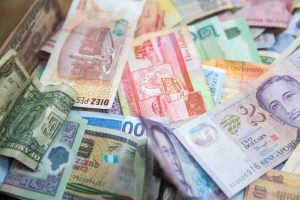Forex trading is a popular form of investment that involves buying and selling various currencies in the global market. The foreign exchange market is the world’s largest and most liquid financial market, with trillions of dollars traded every day. It is also one of the most volatile markets, as prices can fluctuate rapidly due to various economic and political factors. As a result, forex traders are always looking for ways to maximize their profits while minimizing their risks. One of the key metrics used to measure the performance of forex trading is the average rate of return per month.
The average rate of return in forex per month refers to the average percentage of profit that a trader makes on their investment in a given month. This rate of return is calculated by dividing the total profit by the total investment and multiplying the result by 100 to get a percentage. The rate of return can vary widely depending on various factors such as market conditions, trading strategies, and risk management techniques.
The average rate of return in forex trading varies widely depending on the individual trader’s experience, skill, and risk tolerance. Some traders may achieve an average monthly rate of return of 5% or more, while others may only achieve a rate of return of 1% or less. The key to achieving a high rate of return is to develop a sound trading strategy, manage risk effectively, and maintain discipline and patience.
One of the most important factors that influence the average rate of return in forex trading is the trading strategy. There are various trading strategies that traders can use, such as day trading, swing trading, and position trading. Each strategy has its own advantages and disadvantages, and it is up to the trader to determine which strategy works best for them. Day trading involves buying and selling currencies within a single day, while swing trading involves holding positions for a few days to a few weeks. Position trading involves holding positions for several months to several years. Each strategy requires a different level of skill and experience, and traders should choose a strategy that suits their personality and risk tolerance.
Another important factor that affects the average rate of return in forex trading is risk management. Forex trading is a high-risk investment, and traders must take steps to minimize their risks. This can be achieved by setting stop-loss orders, using leverage judiciously, and diversifying their portfolio. Stop-loss orders are used to limit losses by automatically closing out a position when it reaches a certain price level. Leverage is a powerful tool that can amplify profits, but it can also amplify losses. Traders should use leverage carefully and only when necessary. Diversification involves spreading investments across different currencies and asset classes to reduce the impact of any single loss.
In conclusion, the average rate of return in forex trading varies widely depending on various factors such as market conditions, trading strategies, and risk management techniques. Traders should focus on developing a sound trading strategy, managing risk effectively, and maintaining discipline and patience. With the right approach, it is possible to achieve a high rate of return in forex trading over the long term. However, traders should be aware that forex trading is a high-risk investment and should only invest money that they can afford to lose.





